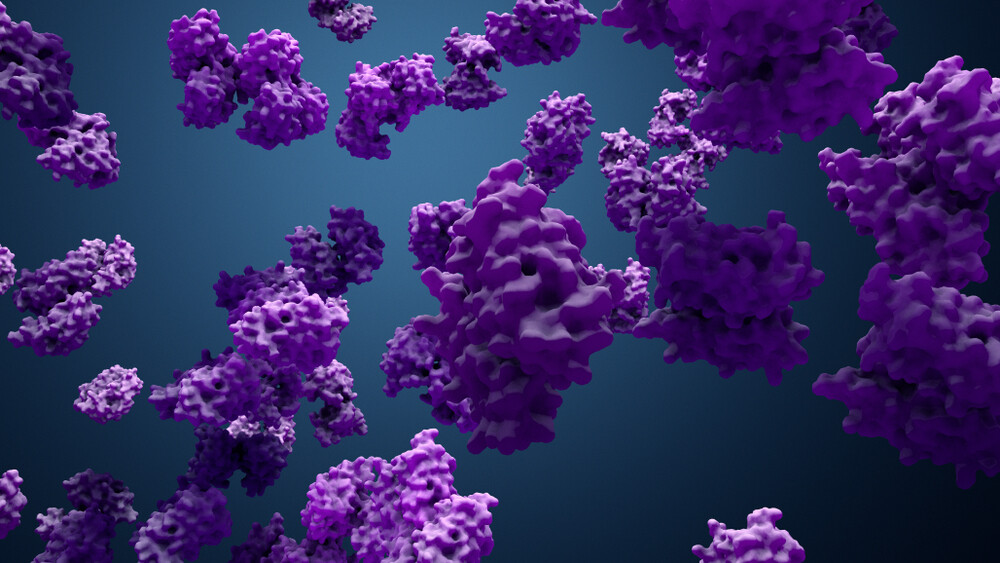Without enzymes, humans would not be viable because the body needs the protein molecules for all important metabolic processes and an intact digestion. On our article you will find all information about the vital biocatalysts.
What exactly are enzymes?
You can imagine enzymes as catalysts of the human body, which ensure that all metabolic processes can function. They set numerous biochemical reactions in motion and can change other substances in such a way that they are available to the organism.
Enzymes are mostly proteins, i.e. proteins. They ensure that your body receives the essential substances from food. To do this, the enzymes break down the food components so that they can be used by the body. The nutrients from the food can thus enter the organism. Quite clever actually!
How do enzymes work?
If you didn’t pay attention in biology, we’ll summarize again how these great enzymes work: Of the estimated 10,000 different enzymes in the body, each enzyme has its specific function in the organism. It always acts on a specific substrate. Thus, a protein-splitting enzyme can only digest protein and cannot break down fat.
In order to break down or change a substrate, the enzyme always enters into a short-term connection with the respective substrate (enzyme-substrate complex). The enzyme then returns to its original structure. Ex and hop on the biochemistry level.
The main enzyme groups
There are three different categories of enzymes: digestive enzymes, food enzymes and metabolic enzymes. While digestive and metabolic enzymes are produced by the body itself, humans ingest food enzymes through the consumption of raw foods.
Digestive enzymes
These proteins are produced in the pancreas, stomach, small intestine and salivary glands of the oral cavity. There they break down the food molecules into their basic building blocks and thus ensure that they are available to the metabolism.
The pancreas is particularly important for the production of numerous digestive enzymes. Among other things, the pancreas produces amylases that convert carbohydrates into simple sugars, lipases that produce glycerol and simple fatty acids from fats, and proteases that break down proteins into amino acids.
Food enzymes
This group of enzymes is found in raw, fresh foods. Food enzymes act like digestive enzymes. The advantage is that they help directly in the digestion of the food consumed. When consuming fresh fruit and raw vegetables, up to 70 percent of the food is digested directly by the enzymes themselves. However, if the food is cooked, the high temperature destroys the enzymes. For a good enzyme supply it is therefore important to eat raw vegetables. This should be as varied as possible to ensure a supply of the various enzymes. Particularly enzyme-rich fruit varieties are bananas, pineapple, figs, pears, papaya and kiwis. Among the vegetables, broccoli, tomatoes, cucumbers and zucchini have a high enzyme content.
Metabolic enzymes
This group of enzymes is found throughout the body. So they are produced in the cells, organs, bones and blood. Only through them can the organs such as the heart, kidneys and lungs function at all, because they are jointly responsible for the control of the organs. The metabolic enzymes ensure that the nutrients from food can develop their full effect. They therefore help to provide the body with vitamins, minerals, secondary plant substances and hormones.
Effect of enzymes on the skin
Enzymes are important for all important processes within the body. But the diligent biocatalysts do not only help internally, but can also be applied externally. People who suffer from acne or sensitive skin can help to improve the appearance of their skin with the help of an enzyme peeling. An enzyme peeling is particularly gentle because the skin is not rubbed off mechanically, but is applied like a mask. Nevertheless, it is important not to exceed the exposure time, as a biochemical reaction takes place on the skin.
The peeling mostly consists of enzymes from fruits which can break down fats and proteins. They dissolve dead skin particles and remove excess sebum. After application, any residue from the peeling can be thoroughly removed with water. Enzyme peelings are freely available and usually very gentle on the skin. Nevertheless, they should not be applied more than once a week to prevent the peeling effect from being too strong.


